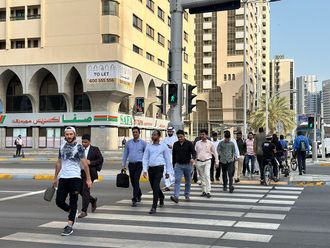Currency notes and coins the UAE has used over the last century are on display at an exhibition in Bait Al Gharbi in the Sharjah Heritage Area.
The event takes on added interest in view of the fact that the country has been the region's premier trade hub for decades, and that the exhibits have been the tools that facilitated commercial transactions, Department of Culture & Information officials suggested yesterday.
The earliest official UAE paper currency on display is a Dh1,000 note from Dubai, with another Dh50 note shown alongside bearing the names Abu Dhabi, Dubai, Sharjah, Ajman and Umm Al Quwain.
But the earliest currency note displayed is a 1935 one-rupee Indian issue bearing the image of King George V from the Government of India, then legal tender in this part of the world.
King George VI also figures prominently on the notes, which come in various denominations: Rs1,000, Rs100, Rs50, Rs10, Rs5, Rs2 and Re1.
The notes carry the signatures of a succession of central bank chiefs, with the ones immediately preceding UAE notes bearing the Reserve Bank of India mark. Other currencies that were earlier legal tender here - Saudi, Qatari and Bahraini - are also on display.
Paper currency denominations include 100, 50, 10, 5, 1, and even a half-riyal Qatari note.
Coins on display go back even further, being etched with the imprints of Empress Victoria, King Edward VII and King George V. An Indian one-rupee coin bears the date 1918.
Rare notes, coins on display in Sharjah
Currency notes and coins the UAE has used over the last century are on display at an exhibition in Bait Al Gharbi in the Sharjah Heritage Area.











